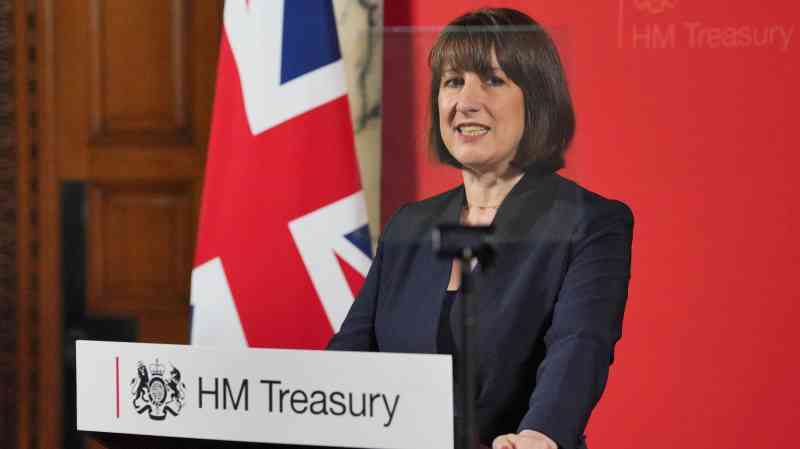Bank of England to reduce bond sales
The Bank of England will reduce the amount of bonds it sells back to investors as part of its quantitative tightening programme, easing pressure on the government before next month’s budget.
The central bank’s monetary policy committee said it would carry out £100 billion of quantitative tightening (QT) over the next 12 months, shrinking its balance sheet at the same pace as last year, but drastically reducing active gilt sales to £13 billion. This is down from active bond sales of £50 billion over the previous year, with the remaining £87 billion coming through maturing gilts where proceeds will not be reinvested.
The £100 billion figure was expected by financial markets but is lower than the £125 billion estimate made by some economists, which would have ramped up financial losses for the Bank and Treasury.
The Bank became the first big monetary authority to begin active bond sales in 2022, as it looked to drastically shrink the size of its balance sheet after emergency quantitative easing carried out during the financial crisis, the Brexit vote and the pandemic. The QT decision has an outsized impact on the government’s public finances, as bond-selling crystallises losses for the Bank as gilts have fallen in price after recent interest rate rises.
The Bank’s losses are covered by cash transfers from the Treasury and have an impact on the government’s chosen fiscal rule to bring down a measure of the debt ratio within five years. There is growing speculation that Rachel Reeves, the chancellor, will adopt an alternative measure of the debt to exclude the impact of the Bank’s QT decisions at the budget on October 30, generating about £20 billion in extra fiscal headroom.
“The Office for Budget Responsibility had been assuming active sales of £48 billion, so the fact that the Bank will sell less gilts means fewer losses for the Treasury,” Elizabeth Martins, senior UK economist at HSBC, said. “That could open up a little more headroom for chancellor Rachel Reeves. However, that may be of less relevance, if she decides to switch to the debt measure.”
If the Bank maintains its current £100 billion QT pace until 2028, it will generate up to £96 billion in losses for the government over the next four years, according to figures from the New Economics Foundation.
The MPC has said that shrinking its balance sheet has little impact on its monetary policy stance, as it held interest rates steady at 5 per cent in September. The size of the balance sheet will fall to £558 billion in the next financial year and is down from a record of more than £800 billion recorded in 2022.
Katharine Neiss, chief European economist at PGIM Fixed Income, said: “A faster pace could have proven problematic in the future should the Bank need to go below neutral to stimulate the economy.”
If the Bank chose to sell back more gilts to the markets, at a total of £125 billion, it would have generated a £26 billion loss over the coming year, the New Economics Foundation said.
Senior Bank officials have said they want to drastically reduce the size of the balance sheet, selling gilts to protect the central bank from future interest rate risks and accumulating more losses. Cutting the level of excess reserves to the banking system, which is a legacy of years of quantitative easing, will reduce liquidity in the financial system.
Analysis: Ratesetters align on ‘gradual reduction’
The Bank of England is bucking the international trend for fast and big rate cuts. By keeping monetary policy unchanged in September — its last decision before Labour’s maiden budget — the Bank has fallen behind peers in Europe and the US, which are easing at pace (Mehreen Khan writes).
The Federal Reserve on Wednesday carried out an outsized half a percentage point cut, a move usually reserved for emergencies such as the pandemic or a financial crisis. The European Central Bank, which began cutting in July, has already lowered rates twice, leaving the Bank looking like a laggard.
The monetary policy committee will say it has good reasons to stick to a “gradual” decline from higher interest rates. Unlike the Fed, preoccupied with a slowing labour market and rising unemployment, the UK jobs market is holding up well. And unlike the eurozone, where economies including Germany are on the brink of recession, growth in the UK has outperformed this year. Britain looks like it is heading for a vaunted “soft landing” from two years of rising inflation.
“An economic soft patch is taking shape against the backdrop of a receding fiscal impulse, which should allow underlying inflation to settle lower alongside cooling wage growth,” Konstantinos Venetis at TS Lombard, a research firm, said. “We have now reached the stage where the MPC is inclined to push ahead with a gradual loosening of the monetary reins unless the data starts suggesting otherwise.”
The vote on Thursday split of eight to one in favour of keeping the rate unchanged shows that the MPC’s views are also beginning to converge after divisions about the direction of monetary policy emerged this year. Swati Dhingra was the only dissenter this month, in contrast with the previous decision to reduce the base rate by a narrow five votes to four. Then, governor Andrew Bailey cast the deciding vote.
“The big news is perhaps the more unified message from the MPC: a slow and steady removal of policy constraints,” Sanjay Raja, chief UK economist at Deutsche Bank, said.
Traders are betting on just one more rate reduction this year, probably in November, to 4.75 per cent. The Fed and ECB are expected to go further and faster with at least two more reductions this year.
“There is no urgency to cut rates,” Katharine Neiss, a former Bank official at PGIM Fixed Income, said. “If the Bank’s agents’ survey in December looks good in terms of meeting the 2 per cent inflation target, this could drive … more aggressive cuts in early 2025.”




Post Comment